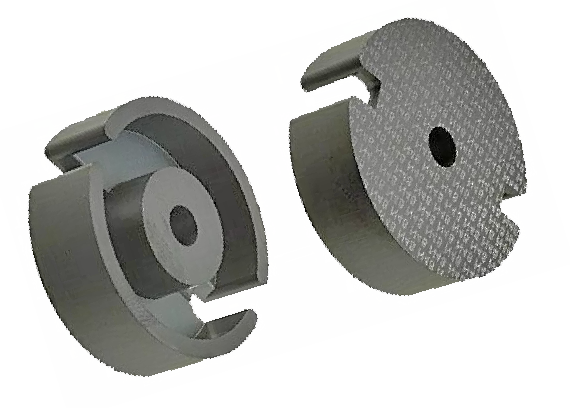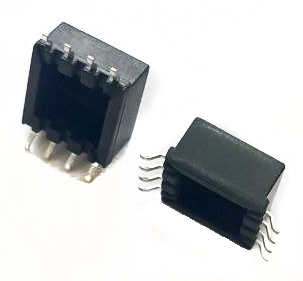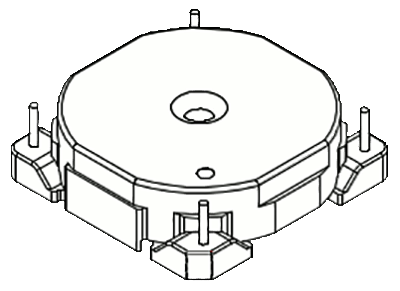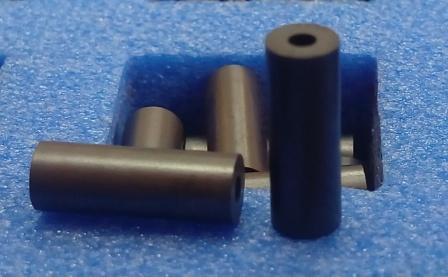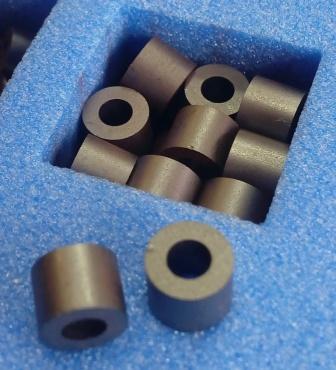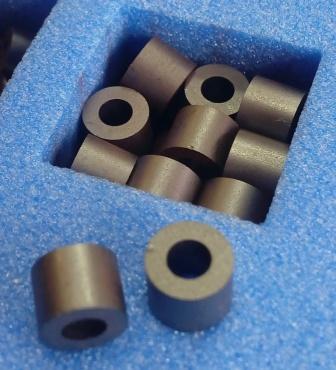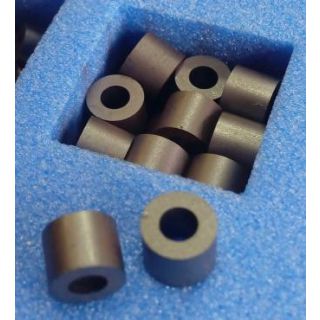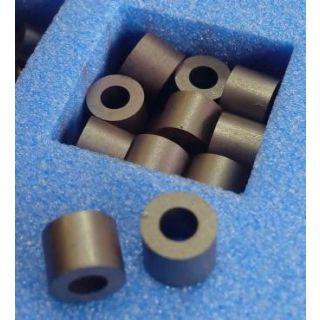Figure 3: PM core featuring three air gaps, with the third gap created by the counter piece. This design is available in core sizes ranging from 50 to 114.
Substantially more efficient with enhanced materials and optimized geometries
In addition to miniaturization, enhancing efficiency is one of the key goals in power supply unit design, with every fraction of a percent improvement being significant. Alongside power semiconductors, ferrite cores play a crucial role in determining overall efficiency. To address this, TDK has developed a new ferrite material and optimized core geometries.
Power supplies of all kinds rely on ferrites, which, in various core designs, serve as the foundation for inductors used in energy storage and transformers responsible for power transmission and galvanic isolation.
While today's designs aim for efficiencies exceeding 98%, engineers continue to push for even the smallest gains, particularly in high-power applications, to further improve efficiency while simultaneously reducing the size and weight of components.
The introduction of new wide bandgap semiconductors, such as GaN (Gallium Nitride) and SiC (Silicon Carbide), is driving this progress. These semiconductors allow for switching at higher frequencies with faster slew rates and reduced losses, making it possible to use significantly smaller inductors and transformers or to manage higher power levels with components of the same size. However, the challenge lies in the fact that conventional power ferrite materials are not optimized for operation in the MHz frequency range, where they experience increased losses compared to lower frequencies.
The new PC200 material delivers high efficiency at frequencies up to 4 MHz.
To leverage the benefits of new semiconductors, TDK developed the PC200 ferrite material based on MnZn, optimized for the frequency range of 0.7 MHz to 4 MHz. The maximum power transmission occurs at a switching frequency between 1.8 MHz and 2 MHz, with an operating temperature of 100°C. With a Curie temperature exceeding 250°C, PC200 is especially well-suited for transformers utilizing ring or planar core designs. Figure 1 illustrates a performance comparison between PC200 and conventional materials.

Figure 1: The PC200 MnZn ferrite material delivers optimal performance at around 2 MHz, making it ideal for power supply topologies that utilize new wide bandgap semiconductors like GaN and SiC.
70% Reduced Losses with Distributed Air Gaps
The use of single air gaps in ferrite cores is a widely adopted method to delay core saturation and enhance performance. However, these relatively large single gaps can increase fringing flux, leading to additional copper losses, especially at high frequencies. TDK, through the introduction of new geometries and a core manufacturing process involving distributed air gaps, has become the first ferrite core manufacturer to offer an efficient solution for reducing electromagnetic emissions and heat generation (Figure 2). By positioning the gaps in the center post, magnetic field emissions to the surrounding environment are effectively minimized.
Various core sizes with three distributed air gaps are available in E, EQ, ER, ETD, PM, and PQ core designs, compatible with all EPCOS power materials. Solutions with three air gaps (Figure 3) deliver the best cost/performance balance for applications where the switching frequency is two to three times higher than the original frequency. This arrangement can reduce losses by up to 70 percent. Additionally, customer-specific designs with varying numbers of air gaps can be customized to meet specific needs.
With the combination of the new PC200 ferrite material and advanced core geometries, it is now possible to fully capitalize on the advantages of new semiconductor technologies while achieving higher efficiency and miniaturization.

Figure 2: The power losses (indicated by the red areas) can be significantly reduced with the use of identical distributed air gaps (right) compared to the traditional approach that employs a single gap (left). Solutions featuring three identical air gaps provide the optimal cost/performance ratio for applications operating at high frequencies.


